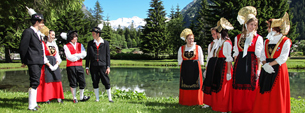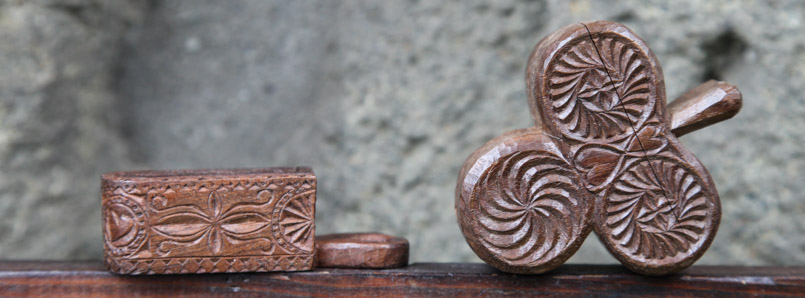Carved objects
The wooden and soapstone surfaces have ornamental motifs and regular geometric canons, almost "musical" expressions of an immortalised popular spirit
The technique of carving wood or soapstone started in the Aosta Valley to embellish everyday items, in order to decorate homes and make them more welcoming.
The first decorations were principally geometric designs, rosettes, stars, compass circles and sun circles.Even as far as the carving is concerned, craftsmen in Valle d'Aosta are self-taught. Their work is schematic and simple, yet appealing and attractive and the sober decorations are almost all symmetric.
Present day decorative art has preserved its traditional archaism: circles that intertwine and combine, forming an infinity of ornamental motifs, crosses, initials, rosettes, branches, flowers, etc. Many of these decorations have a symbolic value and help explain the character and spirit of the people in Valle d'Aosta: these are symbols of faith, attachment to the church and love of the family. The initials sculpted on beams, windows and equipment symbolise the lively sense of property, the wish to perpetuate their lineage and hand something down to the next generation.
The repetition of geometric motifs has been seen by some critics as a sign of love for everything that represents order and schematic repetition as is also testified by the passion that the people of Valle d'Aosta nurture for music, poetry, singing and rhythm.










